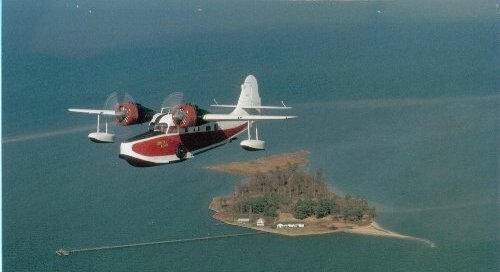



Model Radios
Model Aviation has changed dramatically in the last 50 years. When I started in the 70s there was only one frequency band available for both aircraft and surface models. This band was situated in the 27 MHz frequency range and allowed only 7 radio controls to be used simultaneously. The seven available frequency channel numbers (not to be confused with channels of control, like a 4-channel or 2-channel radio) were identified by a single colored flag, each color identifying a different frequency. In order to prevent two people from using the same frequency, you could visually 'see' what frequency each pilot was using by observing the color of the flag attached to the radio antenna.
A problem arrose with the 27 MHz band in the late 1960s and 70s due to the growth of CB radio usage which transmitted on the same frequency range as the radio units. Interference from the CB radios was common, hence the sound of someone shouting "I'm Hit" as their precious aircraft plummets to the ground!
In the later half of the 70s the FCC opened the 72Mhz Band for model aircraft use allowing 6 frequencies designated by a combination of two color flags. This grew to about 20 frequencies with a 40 khz spacing by the 1980s and in 1991 the mandatory narrow banding went into effect. Now starting at 72.010Mhz up to 72.990Mhz with 20 Khz spacing we had a solid 50 frequencies we could fly. Of coarse frequency crossing and harmonics had to be addressed at many airfields and there where still safety issues with the number of planes in the sky at one time, but we had a much more usable spread than in previous times. Frequencies where controled by a board at the field with pins designating the frequency "channel" you where on. Designated by a two digit number starting with 11 and through 60. You may be required to impound your radio and then when you have the pin you can retreive your radio and fly. Returning your radio to impound and the pin when you are done. As long as everyone followed the rules issues rarely happened.
Then in the late 90s 2.4Ghz frequencies where anounced. This held the promise of interference free use and better compatibility with large numbers of aircraft being flown at the same time. By the early 2000s there where multiple manufacturers producing reliable 2.4Ghz systems but each used their own protocol making them incompatible with each other. However overall we enjoy the ability to fly almost worry free in today's radio environment.
How do you Choose which radio to purchase (unless you choose a RTF that comes with a radio.) Talk to the Instructors at the club as to the best radio to buy. As they will likely recommend a brand they use they will know the programing and setup menus on the radio. This will make your introduction and early instruction that much easier as you will not be learning a radio from someone who is learning it himself.
A problem arrose with the 27 MHz band in the late 1960s and 70s due to the growth of CB radio usage which transmitted on the same frequency range as the radio units. Interference from the CB radios was common, hence the sound of someone shouting "I'm Hit" as their precious aircraft plummets to the ground!
In the later half of the 70s the FCC opened the 72Mhz Band for model aircraft use allowing 6 frequencies designated by a combination of two color flags. This grew to about 20 frequencies with a 40 khz spacing by the 1980s and in 1991 the mandatory narrow banding went into effect. Now starting at 72.010Mhz up to 72.990Mhz with 20 Khz spacing we had a solid 50 frequencies we could fly. Of coarse frequency crossing and harmonics had to be addressed at many airfields and there where still safety issues with the number of planes in the sky at one time, but we had a much more usable spread than in previous times. Frequencies where controled by a board at the field with pins designating the frequency "channel" you where on. Designated by a two digit number starting with 11 and through 60. You may be required to impound your radio and then when you have the pin you can retreive your radio and fly. Returning your radio to impound and the pin when you are done. As long as everyone followed the rules issues rarely happened.
Then in the late 90s 2.4Ghz frequencies where anounced. This held the promise of interference free use and better compatibility with large numbers of aircraft being flown at the same time. By the early 2000s there where multiple manufacturers producing reliable 2.4Ghz systems but each used their own protocol making them incompatible with each other. However overall we enjoy the ability to fly almost worry free in today's radio environment.
How do you Choose which radio to purchase (unless you choose a RTF that comes with a radio.) Talk to the Instructors at the club as to the best radio to buy. As they will likely recommend a brand they use they will know the programing and setup menus on the radio. This will make your introduction and early instruction that much easier as you will not be learning a radio from someone who is learning it himself.

